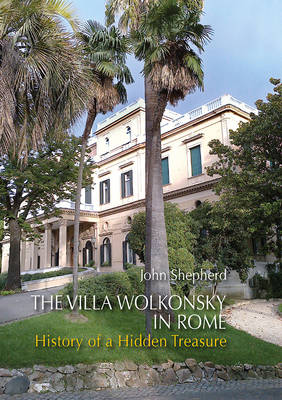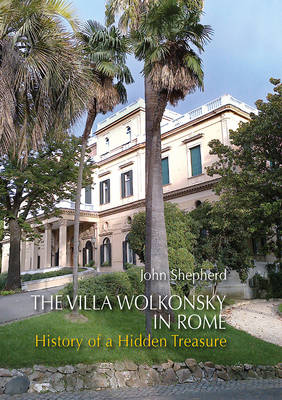
- Afhalen na 1 uur in een winkel met voorraad
- Gratis thuislevering in België vanaf € 30
- Ruim aanbod met 7 miljoen producten
- Afhalen na 1 uur in een winkel met voorraad
- Gratis thuislevering in België vanaf € 30
- Ruim aanbod met 7 miljoen producten
Zoeken
€ 32,50
+ 65 punten
Omschrijving
The first comprehensive history of the Villa Wolkonsky, one of Rome's hidden treasures, and since 1944 the residence of the British ambassador. The Villa Wolkonsky, Rome, is the incongruously named official residence of the British ambassador to Italy. Nestled within the city's Aurelian Wall, the site's history dates back to antiquity, its gardens dominated by the remains of a first-century imperial Roman aqueduct. In the 19th century a remarkable Russian princess, Zenaïde Wolkonsky, turned it into a country home and salon d'art with such illustrious visitors as Gogol, Turgenev and Fanny Mendelssohn. Following generations excavated Roman tombs, collected antiquities and built a new grand mansion, before selling the Villa to the German government in 1922. It remained the German embassy, being much enlarged, until the Liberation of Rome in 1944. After the war the UK bought it, first as embassy offices and residence and, since 1971, as the residence for the ambassador and other staff.In this handsomely illustrated volume, Sir John Shepherd, former ambassador, has undertaken new research to debunk long-held myths and present, for the first time, a comprehensive history of this hidden Roman treasure.
Specificaties
Betrokkenen
- Auteur(s):
- Uitgeverij:
Inhoud
- Aantal bladzijden:
- 368
- Taal:
- Engels
Eigenschappen
- Productcode (EAN):
- 9781785513251
- Verschijningsdatum:
- 8/04/2021
- Uitvoering:
- Hardcover
- Formaat:
- Genaaid
- Afmetingen:
- 180 mm x 249 mm
- Gewicht:
- 1065 g

Alleen bij Standaard Boekhandel
+ 65 punten op je klantenkaart van Standaard Boekhandel
Beoordelingen
We publiceren alleen reviews die voldoen aan de voorwaarden voor reviews. Bekijk onze voorwaarden voor reviews.











